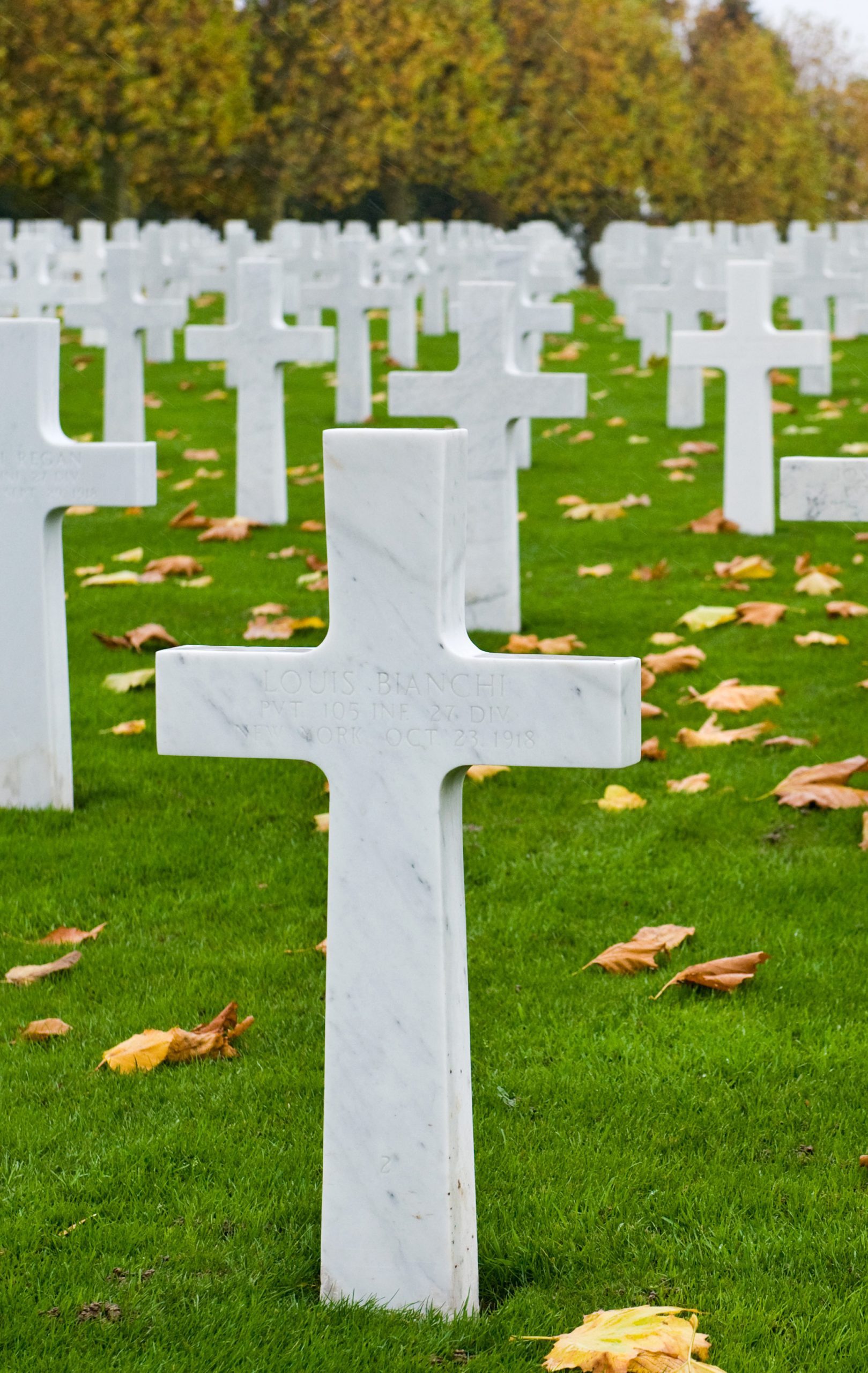The Battle of the Somme!
On 1 July 1916, British and French soldiers began an attack on German forces in the Somme region of France. The casualties suffered by the British on that first day were the worst in the history of the British Army.
It began a 3-month campaign of ferocious fighting during WW1.
More than three million men fought in the battle and a third of those, one million men, were wounded or killed. For this reason, it is recorded as one of the deadliest battles in human history.
The battle of the Somme in 1916 was originally designed as a joint assault by the British and French to break through the German lines. Due to the gruelling battle at Verdun, it became a largely British offensive which was also meant to relieve pressure on the hard-pressed French army.
The first day of the assault, on the 1st July, saw the British suffer almost 60,000 casualties, with nearly 20,000 dead. It remains the worst day the British Army has ever suffered.
The battle continued until November. It brought high losses for only marginal gains in territory. But it did cause the German Army severe hardship in what turned out to be a war of attrition.
Significant events saw the widespread use of large mines and the deployment of the tank for the first time.
Discover The Somme Anniversary Tour
To mark the start of this ferocious and devastating period of fighting, we offer a 4-day all-inclusive ‘Discover the Somme’ anniversary tour.
The following is our 2023 itinerary.
This tour is for a maximum of ten guests to ensure those that join us get a really personal experience. It will commemorate the start of this momentous 4-month campaign of WW1 when in just one day, on July 1st 1916, a staggering 57,470 casualties were suffered by the British, including 19,240 killed. These unimaginable losses were the worst in the history of the British Army.
The itinerary has been carefully curated by our military expert, Andy Fittes, with the intention of showing you not only some of the major memorials across the region, but also some of the lesser-known sites so often missed by larger tours. We will walk the paths of British and allied forces across the still scarred landscape of the Somme battlefields, re-telling soldiers’ stories as we pay homage to the bravery and sacrifice of all the young men that fought for our freedom, including one soldier’s incredible story, as told by his grandson, as we retrace a journey of a boy soldier that was only unearthed through our research in 2021.
Visiting to co-incide with the anniversary also allows us to join some of the special remembrance services that take place on the 1st July each year. The package cost is an all-inclusive price, incorporating transport, accommodation, meals and refreshments and museum entries – as well as your expert, personal guide who will be on-hand throughout your tour.
Accomodation
Chateau Le Miellard
This beautifully refurbished chateau, set in 3,000 sq metres of private gardens, is exclusively ours for the duration of our stay in France. It has numerous grand reception rooms, 7 double bedrooms and 2.5 bathrooms, accommodating a group of up to 14 people. You can stay in the utmost comfort following your day-time tours and are able to make yourselves completely at home, helping yourselves to refreshments and snacks throughout your stay and enjoying the stunning surroundings. Your tour guides and hosts will cater when not eating out with a choice of continental or cooked breakfast prepared each day. Linen and towels are provided.
Itinerary Highlights
Vimy Ridge
The Battle of Vimy Ridge began on Easter morning 1917. Amid sleet, mud and shellfire, the soldiers of the Canadian Corps fought their way up the ridge to take the high ground overlooking the Douai plain. This stunning victory followed years of failed attempts to retake the ridge, and months of planning and preparation for the operation.
The ridge had fallen into German hands during the initial advances of 1914. Since then, around 150,000 French and British soldiers had fallen trying to retake it.
The land around Vimy Ridge was gifted to Canada by the French government in December 1922 as a mark of gratitude for Canada’s involvement in the defense of France during the First World War and is now the site of Canada’s national memorial.
Construction of the memorial began in 1925, took 11 years to build and cost 1.5 million dollars.The monument sits on the highest point of the ridge, known during the battle as Hill 145. The two tall columns represent Canada and France, and the friendship between them. The monument includes 20 allegorical figures representing such values as honour, justice and peace. One female figure, who stands alone looking out over the slopes of the ridge, is known as “Canada Mourning Her Fallen Sons” or “Canada Bereft”. She is carved from a single, 30 tonne block of stone. The base of the monument is engraved with the 11,285 names of Canadians who have no known grave in France.
Walking Tour of Fromelles
The Battle of Fromelles (19–20 July 1916) was a brief but bloody episode of the Great War.
Its purpose was to take pressure off the French and the British forces in the Battle of the Somme. It lasted 24 hours and resulted in a significant reverse for the British and Australians. Australians suffered 5,500 casualties, the British had 1,500 soldiers put out of action and the German toll was 1,600 dead or wounded.
After the destruction wrought by the First World War, Fromelles lay in ruins. But the village was rebuilt and farmers returned to their ravaged fields. Today, all that remains of that terrible battlefield are the cemeteries of the Commonwealth War Graves Commission and a few German blockhouses.
In 2007, five mass graves were discovered. These had been dug by the Germans two days after the battle. Careful excavation revealed the bodies of 250 men. Their remains have been reburied in a new cemetery at the heart of the village.
(See where the walking tour will take you below the itinerary)
Ulster Tower
The Ulster Memorial Tower stands on what was the German front line during the Battle of the Somme, July to November 1916. It was erected on the site of the Schwaben Redoubt, a strongly fortified position, which the Ulster Division eventually captured from the enemy.
The Tower stands some 70 feet tall and is a lasting tribute to the men of Ulster who gave their lives during the First World War. The Tower is more specifically regarded as a memorial to the Officers and Men of the 36th (Ulster) Division and of the Sons of Ulster in other forces, who laid down their lives.
The Ulster Memorial Tower was the first official memorial to be erected on the Western Front and was dedicated on 19th November 1921.
The Tower itself is a replica of a well-known Ulster landmark, Helen’s Tower, which stands on the Dufferin and Ava Estate at Clandeboye, County Down. It was in the shadow of Helen’s Tower that the men of the newly formed Ulster Division drilled and trained on the outbreak of war. For many of the men of the 36th (Ulster) Division the distinctive sight of Helen’s Tower rising above the surrounding countryside was one of their last abiding memories of home before their departure for England and subsequently the Western Front.
Delville Wood Memorial
Delville Wood was a site of particularly ferocious fighting during the battle of the Somme. Part of Haig’s infamous ‘Great Push’ to end the war on the Western Front, the taking of Delville Wood was considered an invaluable victory.
Just over 3,000 men from the South African 1st Infantry Brigade were tasked with clearing the wood and were ordered to take the wood “at all costs”. The odds were stacked against them. They were facing a much larger German force of around 7,000 men. The terrain, amongst the tree roots, meant their trenches were shallow, and gave very little protection against artillery attacks. Most of the combat was hand-to-hand fighting and casualties were high. However, the South Africans fought valiantly within the wood until July 19th when they were relieved. Their casualties were some of the worst seen on the Western Front.
South Africa purchased the site in 1920, and it serves as a memorial to South Africans who fell, not just here, but elsewhere. There was very little left of Delville Wood after the war.
Today, the wood has regrown, and there are four rows of mature imposing oak trees in front of the memorial entrance.
Remembrance at Lochnagar Crater
On Saturday 1st July 1916, at 7.28am, two minutes before the commencement of the battle of the Somme, a large mine placed beneath the German front lines was exploded with the intention of assisting the British infantry in their advance.
The colossal 70ft deep, 330ft wide Lochnagar Crater, still visible today, was the result. The site has become a focus of remembrance, the physical enormity of the crater perhaps marking the magnitude of the battle that ensued.
At 7.28am on 1st July each year, people gather to honour the tens of thousands lost on that very first day, and also in the 4-months of ferocious fighting that followed.
The crater now forms the central point to a larger memorial garden. Twenty ‘Labyrinth’ panels lead visitors on an emotional journey around the crater. They relay the story of the crater itself and the experiences of some of the men who suffered in the battle. As you progress, they broaden to highlight the consequences of war and its tragic aftermath.
Lochnagar also hosts several unique memorials from a diverse range of causes, offering pilgrims a place to pause and reflect in a now peaceful setting.
WW1 Museum at Albert
The frontline stabilized in October 2014 just 2km northeast of the town of Albert. This made it a prime location for British troops to prepare for the offensive of the 1st July 1916. The majority of British soldiers would have passed through Albert on their way to join the battle, so it is fitting that this has become the site of one of the most popular WW1 museums visited by thousands of British tourists each year.
The museum was created between 1991 and 1992 using the largest of seven underground tunnels, built as civilian bomb shelters in preparation for WW2. The tunnel lies 10 metres underground and is 250 metres long. Its long corridor and alcoves now form the backdrop for life-sized exhibits that show the conditions in which soldiers lived in the trenches.
When the museum opened its doors on 1st July 1992, it recorded first year visitor figures of 10,000 admissions. This figure rose to 90,000 in 2014, 60% of whom were English-speaking tourists. Each year, the museum continues to acquire new pieces to enhance the scenes during the winter closure.
The story of a boy soldier – Alfred William Turner
One of the services offered by Century Tours is ancestry and military research to trace soldiers’ stories that have been lost to their families.
In 2021, we had the privilege of tracing the war journey of Alfred William Turner and sharing this with his grandson and great grandson as we re-trod his path across the Somme battlefields the following year. The story we unearthed was an incredible one, the tale of a young lad who joined up underage and faced the ravages of trench warfare across France, finding himself on the frontline during the bloody Battle of the Somme.
We have invited Dave Turner, grandson of Alfred, to join us on this tour to re-tell his grandad’s story in his own words.

Itinerary
Lunch en-route
Breakfast en route
Lunch en route
Walking Tour
Costs
Thiepval Memorial to the Missing
The Thiepval Memorial, the Memorial to the Missing of the Somme, bears the names of more than 72,000 officers and men of the United Kingdom and South African forces who died in the Somme sector before 20 March 1918 and have no known grave.
Over 90% of those commemorated died between July and November 1916. The memorial also serves as an Anglo-French Battle Memorial in recognition of the joint nature of the 1916 offensive and a small cemetery containing equal numbers of Commonwealth and French graves lies at the foot of the memorial.
The memorial, designed by Sir Edwin Lutyens, was built between 1928 and 1932 and unveiled by the Prince of Wales, in the presence of the President of France, on 1 August 1932.
It is a must visit for anyone visiting the Somme region.
Newfoundland Park Memorial
Today, there aren’t many places where the ground has been undisturbed since the end of the First World War. However, the Newfoundland Memorial Park is one of those, and one of the largest areas on the Western Front where shell-holes and the trenches of both sides can still be clearly seen and even entered and walked along.
The area has been maintained because of the significance to Newfoundland; the Newfoundland Regiment, part of the 29th Division, which attacked here on the 1st of July 1916 and suffered appalling losses. After the War, Newfoundland purchased this land in 1921, and first it and then the Canadian government (after 1949) have maintained it ever since as a memorial. It was officially opened in 1925, by Earl Haig.
In 1997 it was designated a Canadian National Historic Site, and young Canadians volunteer to spend some time here, greeting visitors and providing information on the park and its history.
The 29th Division was in action at Gallipoli before coming to France in April 1916. On the 1st of July, some troops of the 29th Division did reach the village of Beaumont Hamel, but were forced back. The village was not taken until the 13th of November, when the 51st (Highland) Division successfully attacked.
The statue of a Caribou was chosen for the Memorial as it was the symbol of the Newfoundland Regiment. Similar caribou statues are also located at a number of other sites on the Western Front where the regiment was in action. Just in front of the Caribou are the original 1st of July frontline trenches that the British and Newfoundland troops attacked from.
The Newfoundland Regiment attacked as part of the second wave, at 9.15 a.m. Within half an hour they had suffered terrible losses, with more than 90% becoming casualties.


